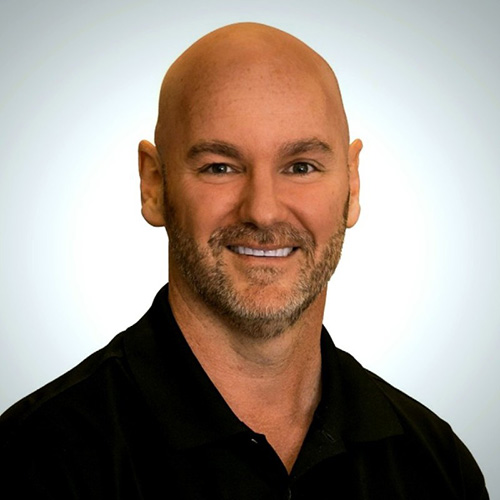
Modernizing Care Coordination: Data Drives Collaboration and Successful Transitions of Care
 6 min
6 min
Improving patient transitions of care is a priority for healthcare organizations. Easy access to data about the patient as they move between care settings can empower case managers to make the best transition decisions and recommendations for patients in their care. Seamless access also helps to strengthen their network of post-acute partners as well as their financial health.
TriHealth, an integrated health system in Cincinnati with two hospitals and more than 130 sites of care, understood that digital transformation was the key to solving the ubiquitous challenges of care coordination. Like many healthcare systems, it was fed up with tedious administrative work and convoluted processes that kept its case managers from caring for patients.
“Our success is measured by the care we provide and getting patients back to the right environment with the level of care they need,” said Steve Mombach, Senior Vice President of Ambulatory Services for TriHealth. “Our mission is to deliver the right care, at the right place, at the right time, and at the right cost.”
TriHealth implemented the PointClickCare post-acute network management solution that transforms patient care by automating the flow of patient data between care settings. A single, integrated cloud-based platform eliminates blind spots between acute and skilled nursing facilities (SNFs).
The health system now has real-time data sharing between their system of providers and their network of SNF partners and access to clinical insights that help to mitigate risks after a discharge, as well as providing visibility and data points about network provider quality scores. This innovative solution empowers the health system to cut costs and strengthen its network of providers.
Real-Time Access to Integrated Data is Critical to Care Coordination
Like many healthcare systems, TriHealth dealt with gaps in post-acute discharge visibility. When a patient was discharged to a skilled nursing facility, their data didn’t flow with them, often resulting in miscommunication and interruptions in care.
“When a patient comes to us, we are treating the whole person and we need data that gives us a complete picture of that patient, including comorbidities, medication, dietary concerns, and medical history,” said Mombach. “That data ensures a smooth transition and drives the care plan.”
Integrating patient data within a single platform provides the data and the access TriHealth needs. The platform enables clinicians to share key clinical data between institutions, access continuity-of-care forms, and search for information they need in one seamless, automatic, and secure solution. Information is always up to date, helping clinicians make the best decisions for patients in their care without delays.
Automated Skilled Nursing Quality and Performance Insights Facilitates Prompt, Informed Decisions for Patient Care and Enhance Network Performance
When a patient moves from one facility to another, paperwork and orders move with them.
Without access to the right information, case managers and providers scramble to find the corresponding information and are forced to make phone calls or send email requests to track it down. As a result, care, including medication and therapy orders, may be delayed.
The last-minute shuffle involved in care transitions can also have a significant impact on families who may have a short period of time to decide what’s best for their loved one. They can feel overwhelmed with options and depend on case managers and providers, who must comb through paperwork, often hundreds of files, to access the information needed to help families make informed decisions.
“We have nearly 200 nursing facilities in our network to consider and to help families choose the best option for their loved ones,” said Lori Baker of Trihealth. “Having information on facilities’ expertise, quality and best outcomes is critical in making informed decisions so families can feel comfortable about their family members going somewhere other than home.”
In addition to providing patient data, care coordination platforms provide managers with data and insights about facilities and the network at large. Rather than manually collecting data from scores of nursing facilities or relying on claims data to understand facility performance or outcomes, they can access updated scorecards on each facility in their network to make data-driven decisions that best serve their patients’ needs.
By sending patients to the facility best suited to their diagnoses, health systems also reduce costs and enhance their network performance. Greater visibility into network performance also reveals opportunities for addressing facility improvements, risk management policies, and care programs, helping to strengthen the business.
Integrating Data Creates Cost-Cutting Efficiencies and Leads to Higher Performance
Modernizing care coordination also benefits the business of care by reducing preventable readmission costs and penalties.
Preventable readmissions are largely driven by failed transitions to post-acute care facilities within 72 hours of discharge and an inability to effectively manage patients during the first 30 days of their stay.
TriHealth was able to lower readmissions in participating facilities by 6.7 percent, saving significant costs by leveraging integrated care coordination to enable smoother care transitions and deliver more proactive care.
Automation removes the time-intensive, manual work of entering patient data to provide a seamless transition, freeing providers to provide more immediate care. Cloud-based solutions also enable providers to proactively manage care, providing real-time access to patient records and status so providers don’t waste time locating information nor are they reliant on skilled nursing partners to alert them to changing acuity levels. With information at their fingertips, they can understand which patients need immediate attention and intervene before a readmission occurs.
Are You Ready to Modernize Care Coordination?
Care coordination solutions eliminate gaps in care and avoid miscommunications between care teams, giving clinicians back precious time to care for patients.
“Integrated access to data helps us elevate care management and become better at what we do,” said Baker. “It makes for a more efficient way of management across the entire care continuum. Clinicians can facilitate smoother patient transfers and coordinate follow up care before a patient leaves a nursing facility. It results in fewer readmissions, improves outcomes, and strengthens post-acute networks.” For more information on how PAC Network Management from PointClickCare can transform your care coordination and overall network performance





